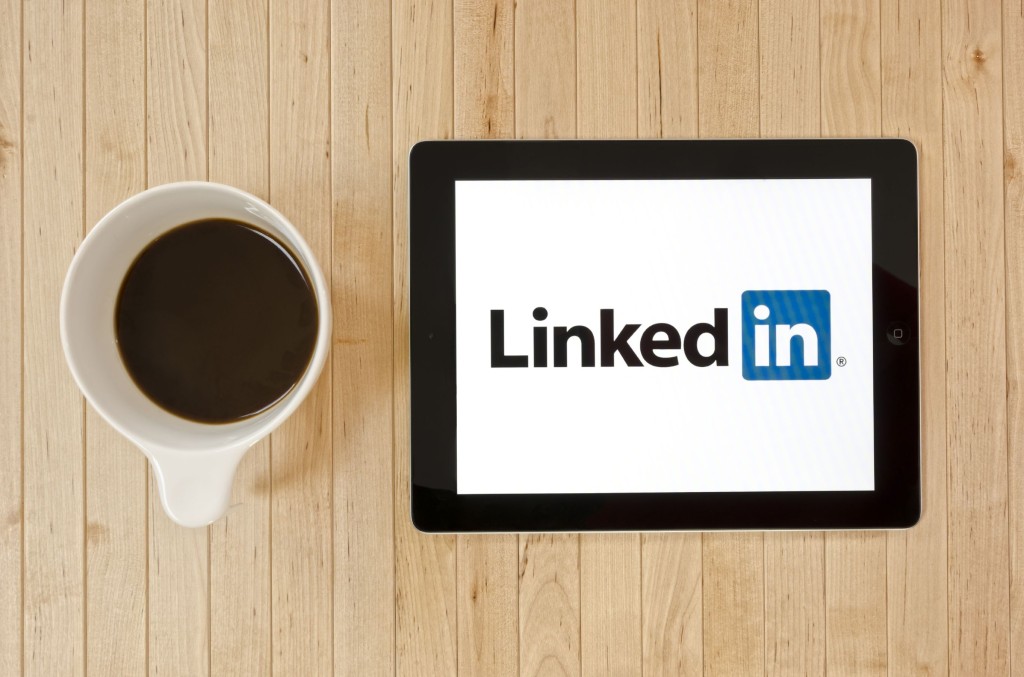“This is good news for job seekers who are a little adventurous but also strategic,” explains Lynn Taylor, a national workplace expert and author of “Tame Your Terrible Office Tyrant: How to Manage Childish Boss Behavior and Thrive in Your Job.” “A hidden market affords you endless opportunities to pursue your dream job. Whether a job is unadvertised or hasn’t even been created yet, by being proactive and pursuing the companies you want to join, you’ll increase the odds of finding what you want. And if the stars line up, you may even have limited or no competition.”

“With any job search, networking is critical, but especially if you pursue this alternative tactic,” Taylor adds. “If you know any insiders who either work or have worked at the companies you’re interested in, that’s great news. Or, you may know an industry contact who can refer you to such a person. But remember that if you’re casting a wide net and are still employed, you must use a lot of discretion.”
Your “hidden job search” will require a lot more research, tenacity, and emotional intelligence than a traditional one, she says, “because you typically have to do more persuading and take the time to package yourself extremely well when you’re trying to land an unadvertised, or non-existent job.” But the effort can be well worth it, she adds.
If you’re up for the challenge, here are 17 tricks for landing an elusive, hidden job:
1- Work on mastering your soft skills.
Taylor says you’ll need: good communication abilities, strong drive, excellent street smarts and instincts, great networking skills, diplomacy, intellectual curiosity, persuasiveness, an ability to articulate your pitch, passion, and creativity.
Aside from having a competitive, marketable skill set, these are some soft skills that can make a huge difference when trying to tap the hidden job market.
2- Find your ‘unique selling proposition’ and master your elevator pitch.
You can’t be all things to all people, so zone in on your brand and “unique selling proposition.”
“Who are you in your industry sphere? What have you accomplished that makes you unique? Where are these skills most needed?” Taylor asks. “Make your elevator pitch powerful and succinct. Once you have your packaging complete, this kind of targeted search will be much more efficient.”
“When pursuing hidden jobs, this is more true than ever,” she explains. “Your question should initially be about whether they can help steer you in the right direction. Informational interviews are a foot in the door, too. They may be arranged because the hiring manager views them as a safe approach to keep your expectations low.”
3- Do your homework.
If and when you decide to pursue this type of job search, the onus is on you to conduct extensive research. “You have a little more latitude when there’s a published opening, but this requires a deeper understanding of the industry, company, their mission, department, specific contact names and duties, as well as knowledge of how you can contribute in a meaningful way,” Taylor explains.
Use keywords and the company name not only on LinkedIn, but through a general search, she suggests. “This way, you’ll find endless information on companies, people, strategies, news, and more.”
Roll up your sleeves and become a job sleuth. “Read news releases. Look for people with common interests and think out of the proverbial box. If one of your prospective hiringmanagers plays on a local golf team or is involved with your favorite charity, for instance, forge ahead and leverage commonalities. If they had an anniversary or major achievement in the press, mention that in your pitch,” she says.
“Since job networking has virtually become synonymous with LinkedIn, and networking is a huge part of your strategy, take advantage of this critical tool,” she says.
4- Network non-stop.
Spread the word about your job search on social media, talk to colleagues, reconnect with former colleagues, attend industry meetings and conferences, and talk with relatives and friends to get the word out. “Just be sure to thank your contacts along the way and offer to helpthem if they need anything,” she says. “Pay it forward.”
If you tell enough people about what you’re looking for and the value you can bring to a company, someone may say, “Oh, I think a job like that might be opening up at my company soon,” or a startup founder may hear about you and say, “We could probably use someone like that on our team.”
“With any job search, networking is critical, but especially if you pursue this alternative tactic,” Taylor adds. “If you know any insiders who either work or have worked at the companies you’re interested in, that’s great news. Or, you may know an industry contact who can refer you to such a person. But remember that if you’re casting a wide net and are still employed, you must use a lot of discretion.”
5- Stay on top of industry and company news.
Your homework is never done.
Set up alerts and stay on top of company and industry news. “It will help open doors and elevate your personal brand with prospective hiring managers,” she explains. “Google alerts is a must-have, but so are those from job-related apps. Openings for similar jobs at companies can give you a sign that your timing is good. Just be sure not to become overwhelmed with every app on the planet, especially if you’re easily distracted. Be focused and selective.”
6- Watch for companies in ‘hiring mode.’
When you read stories of companies hiring in your field, that’s a clue you have an above-average shot at either filling an unadvertised position, or potentially having one created for you, Taylor says.
7- Zero in on your dream job or company.
Finding a hidden job is more laborious, but your approach here is quality, not quantity. “So before you launch your campaign, have a clear idea of the position and companies that most appeal to you,” Taylor suggests. “Then scour their websites to familiarize yourself with their goals and people.”
8- Become a LinkedIn Guru.
“Since job networking has virtually become synonymous with LinkedIn, and networking is a huge part of your strategy, take advantage of this critical tool,” she says.
Learn the ins and outs of it; add meaningful connections; explore the benefits of LinkedIn Premium; post helpful articles to your page and groups; engage with members who might help you; look at your connections and their connections; offer to help others; write to employers; and regularly look at job postings on the site.
9- Ask for guidance, not jobs.
People are much more receptive when they’re not put on the spot.
“When pursuing hidden jobs, this is more true than ever,” she explains. “Your question should initially be about whether they can help steer you in the right direction. Informational interviews are a foot in the door, too. They may be arranged because the hiring manager views them as a safe approach to keep your expectations low.”
10- Volunteer and join committees.
Not only does volunteering with a charity help you give back, it can also establish trust, strong professional bonds, and friendships, she says. “If there’s an industry association that accepts volunteers and you can join a committee, you will interface with people who instantly have common interests. Job seekers who give back to their community have an edge in hiring, too, all things being equal.”
11- Call and email.
Did you need to read that twice? “In this day and age, calling a perfect stranger at a company with anything having to do with a job seems risky,” says Taylor. “However, that could be the very reason that you stand out. Some added ammunition: You know someone in common, you’re highly diplomatic, you have a competitive skill that’s in demand, and you understand their mission and corporate culture.”
Your email can acknowledge that they have no openings, but your background can be described as mutually advantageous for specific reasons. “This is where your deep knowledge of the firm can reap major rewards.”
12- Go as high as you can.
Depending on how senior you are and the size of the company, don’t be afraid to reach out and reach high in the organization.
“If you’re a mid-level IT manager, it may make perfect sense to target the CIO or CTO, especially if you have a very marketable skill. If you start too low, you may have to deal with the ‘fear factor’: No one wants to help a job candidate who could threaten their job security,” she says. “Accessing the email can be tricky, but there are ways to figure it out, and beginning with the appropriate admin can at least get you in the door.”
13- Consider project work or a temp job.
One way to land a job when there’s no advertised opening is to offer your services as a project worker, consultant, or high-level temporary worker. “If a full-time position is in the offing, you’re already well situated,” Taylor says.
14- Be kind to the gatekeeper.
“Most of the corporate positions I accepted were never advertised,” Taylor says. “I targeted companies with whom I wanted to work. I also believe that administrative assistants are the unsung heroes of today’s companies. They’re often the trusted confidantes of C-suite executives.”
Many job seekers make the mistake of overlooking this vast resource and try to circumvent them in emails or calls. But consider their knowledge and influence, she advises. “Executives who are told by their admins that a great candidate contacted them are much more likely to show interest than if the job seeker is evasive. This is where your people skills can shine, as you show respect for the very people who can be invaluable allies.”
15- Have a thick skin and remain positive.
No matter how diplomatic you are, you’ll run across people who will turn you down. “It’s fine. You’re not here to please everyone and you just became one person closer to landing a great, unexpected interview,” she says. “Negativity can drag anyone down, but if you remain tenacious, you will get traction.”
16- Be patient.
If you need a new job fast, this isn’t necessarily the way to go about it. But if you have the luxury of time, it’s an excellent approach.
However, you need to be patient. You’re trying to find jobs that are not advertised or may not even exist yet, so the process may be challenging and can take a while. Don’t give up too easily.
17- Assume an entrepreneurial mindset.
Tell yourself, “They need me more than I need them” until you believe it.
“View yourself as a catalyst for the company’s growth,” says Taylor. “Put yourself in the shoes of the manager and market yourself accordingly.” How will they advance their mission with you on board? What unique abilities do you bring to the table? Consider that you’re offering something they need versus asking for a favor.
“When conducting your job search, it’s wise to pursue the obvious: publicly posted openings,” she says. “But when you expand your options to the ‘unseen,’ the possibilities are only limited by you.”
Businessinsider.com | February 19, 2016 | Jacquelyn Smith









